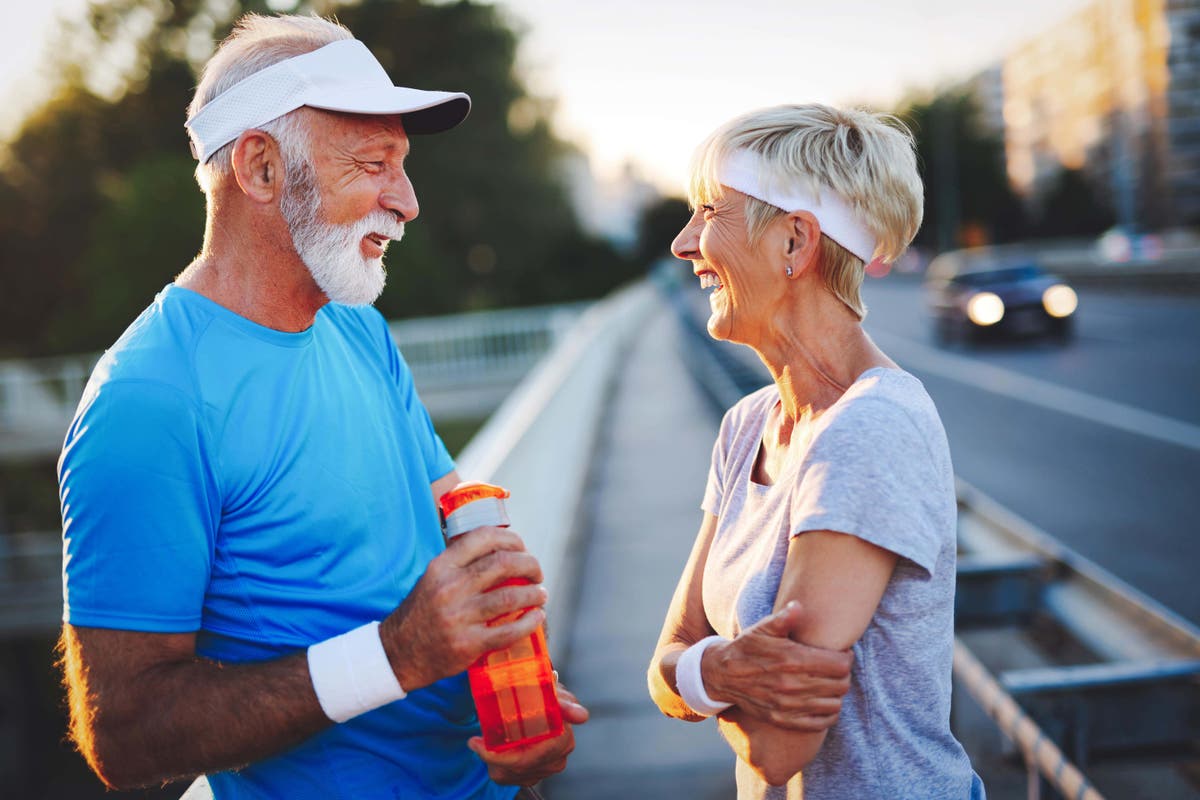Your support helps us to tell the story
This election is still a dead heat, according to most polls. In a fight with such wafer-thin margins, we need reporters on the ground talking to the people Trump and Harris are courting. Your support allows us to keep sending journalists to the story.
The Independent is trusted by 27 million Americans from across the entire political spectrum every month. Unlike many other quality news outlets, we choose not to lock you out of our reporting and analysis with paywalls. But quality journalism must still be paid for.
Help us keep bring these critical stories to light. Your support makes all the difference.
We all deserve some well-earned time to put our feet up and relax when we retire, but making a conscious effort to also stay physically active will do wonders for your physical and mental health.
Here, experts reveal why exercise in retirement is so important, and how to go about it…
Why is it important to stay active in retirement?
“When we retire and take that well-deserved break from work, we can become less active and suddenly quite sedentary,” says Matthew Harrison, first contact physiotherapy lead at Homerton Healthcare Trust.
However, Harrison adds: “As we get older, unfortunately our muscles start to lose some of their strength and size, therefore it’s very important that we maintain and continue to keep them strong as we age.”
This can have a host of benefits, enabling us to stay mobile and independent for as long as possible in later life, help ward off illness, and generally improve our quality of life.
“Being active is the single most effective way of staving off some of the most common illnesses that affect us in our later years, ranging from cancer to heart problems to dementia,” says Lucy Macdonald, physiotherapist at the Octopus Clinic.
“Exercise benefits all of the systems and organs of the body. For example our immune system, by improving our ability to fight off viruses and bacterial infections, and musculoskeletal system, as it reduces our risk of falls and therefore traumatic injuries like hip fractures.”
There are mental health benefits too. As Jess Parkinson, personal trainer and breathing and wellbeing coach, says: “Exercise can improve mental health in many ways, but we know that the chemicals released during exercise, such as endorphins and serotonin, boost mood and help us feel happier within ourselves.”
What about the social benefits?
Research shows that loneliness is associated with higher rates of poor health, so taking steps to stay socially connected after retirement is key.
“Too many patients I’ve seen have massively deteriorated after retirement, as the in-built physical activity of work and socialising with colleagues has gone and not been replaced by anything,” says Dr Robin Chatterjee, consultant in musculoskeletal, sport and exercise medicine at Chelsea Outpatient Centre, part of HCA Healthcare UK.
“Regular socialising and engaging in activities that stimulate the mind are crucial for emotional wellbeing and can help prevent feelings of isolation and depression.”
Brain boost
Furthermore, Jose Guevara, fitness instructor and founder of the Shredded Dad, adds: “There is a strong connection between exercise and brain health. Staying active increases blood flow to the brain, which helps with memory and focus.
“Regular movement has even been shown to reduce the risk of cognitive decline and dementia. Simple activities like swimming or dancing can help keep your brain sharp for years to come.”
Here are some of the best ways to stay active during retirement…
There’s no ‘right’ way to exercise – it’s all about finding things that work for you and which you enjoy. That way, you’ll be more motivated to stick with it! But here are some ideas.Low-impact workout
As we age, joint pain, stiffness and arthritis can become more common, so low impact exercises are often recommended by professionals.
“Low impact exercises – such as yoga, Pilates and swimming – help maintain fitness while protecting the joints, reducing pain, and keeping mobility,” explains Chatterjee. “Yoga and Pilates improve flexibility and balance, while swimming strengthens the whole body.”
Strength training
“Strength training can include work with bands, dumbbells and bodyweight,” says Parkinson. “But working with a weight that challenges us a little is always the best form of strength work, as our body needs to be challenged in order to adapt and get stronger.”
It’s a good idea to do this under the guidance of a professional trainer or instructor if you’re new to strength training – many gyms will offer one-to-one sessions or classes you could join.Tai Chi
“Tai Chi is a form of gentle, flowing movement that improves balance, flexibility and strength,” says Daniel Herman, SAQ coach and founder of Bio Synergy. “It’s also great for mental health due to its meditative aspects, and helps reduce the risk of falls, which is particularly important for older adults.”Walking
Never underestimate the benefits of a simple walk in fresh air.
“Walking is low-impact, easy to start, and can be done almost anywhere,” says Herman. “It strengthens the heart, improves circulation, and maintains joint flexibility.”
Exercise for reduced mobility
If you have mobility limitations, there are still plenty of ways to look after your strength and fitness.
“Chair exercises are great for working on strength and flexibility without having to stand,” recommends Guevara. “Water-based activities, like swimming or aqua aerobics, support your body while offering resistance, helping you stay strong without putting pressure on your joints. It’s all about finding what works for your body and staying consistent.”


